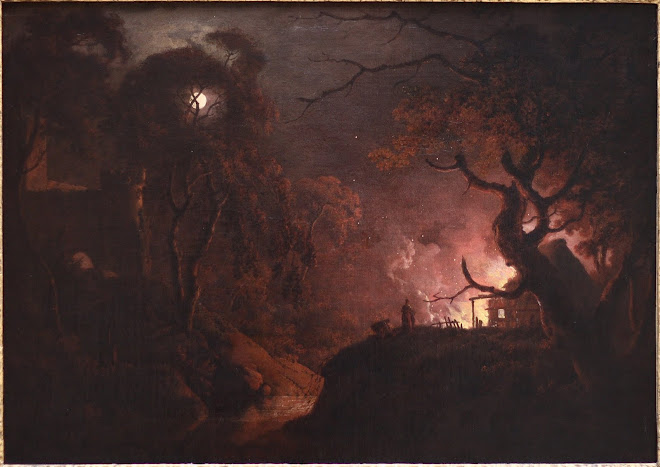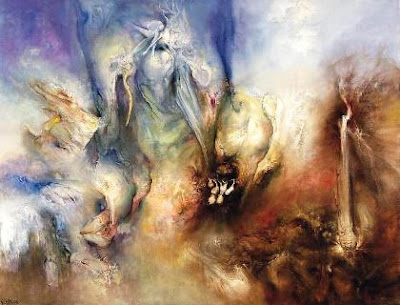So far I have documented the historical landscape art that inspires me, from Dante's world written as far back as the fourteenth century through to the works of Turner, Joseph Wright, Salvator Rosa and more over the seventeenth and eighteenth centuries. These works set a precedent for future artists, those of which im going to explore next.
Charles E Burchfield (1893 - 1967)
 Village in the Swamp, 1930
Village in the Swamp, 1930
American visionary artist. A watercolor painter from Ohio, Burchfield is known for his visual commentaries on the effects of Industrialism on small town America as well as for his paintings of nature described as "the mystic, cryptic painter of transcendental landscapes, trees with telekinetic halos, and haunted houses emanating ectoplasmic auras." His influences as van Gogh, Caspar David Friedrich, Marsden Hartley, John Marin the Village Voice, "Mystic cryptic revelations" by Jerry Saltz, Dec 13, 2005
SURREALIST LANDSCAPES
Max Ernst (1891 - 1976)
 |
DIe Lust Leben 1936
 |
| Die Faszinierende Zypresse 1940 |
|
 |
Nightmare
Max Ernst's are alien. they can be apocalyptic and some remind me of films such as Day of the Triphids, I love the unusual shapes created and Ernst's techniques of applying paint add to the sporadic and fantastical images. There are several Techniques I would like to experiment with in my project;
SURREALIST TECHNIQUES
- AEROGRAPHY - 3D Object used as a stencil with spray paint
- BULLETISM - Shooting ink at a blank surface and developing an image from the marks
- COULAGE - Involuntary sculpture. Molton material poured into cold water and cooled to take random forms
- ECLABOUSSURE - Watercolour or oil laid down and water or turps splattered on the surface, then blotted to create new dimensions
- ENTOPIC GRAPHOMANIA - Dots made at sites of impurities in paper and lines made between dots.
- EXQUISTIE CORPSE
- ETRECISSEMENTS - Collage made reductively cutting out parts of images to encourage a new image
- GRATTAGE - Scraping away dry paint
- HEATAGE - Exposed & Unfixed photo negative heated from below causing the emulsion to distort in a random fashion
- SOUFFLAGE - Liquid paint is blown to inspire or reveal an image
- FRACTAL DECALOMANIA - As the sheets separate paint adheres to both the top and bottom forming noges between the papers with increasing distance between the papers. The paint ridges coalesce and a branching pattern appears, as more and more ridges coalesce, a dendritic fractal forms.
Salvador Dali (1904 - 1989) Swans reflecting elephants
Autumn Cannibalism |

Remedios Varo (1908 - 1963)
Remedios Varo was a spanish-Mexican female surrealist painter. I am looking at her as she was famed for using the ECLABOUSSURE technique listed above.
Valle Luna
James Gleeson (1915 - 2008)
James Gleeson was an Australian Surrealist, his themes included literary, mythological and religious subject matter and was interested in Jung's archetypes of the collective unconscious. During the 1950's and 60's he moved to a more symbolic perspective forming small psychedelic compositions made using the surrealist technique of decalcomania in the background, to suggest a landscape.
James Gleeson is one of my favourite painters, his dreamy ethereal, fragment subjects create their own worlds, as a viewer you can spend so much time just piecing together the scene, the palette he uses has a darkness to it but is lifted with pale blue hues and yellow highlights, they have appear to be quite spiritual in my eyes.














